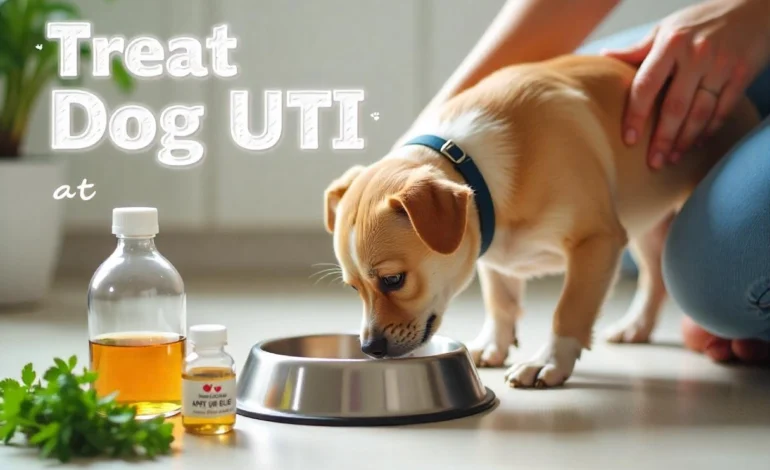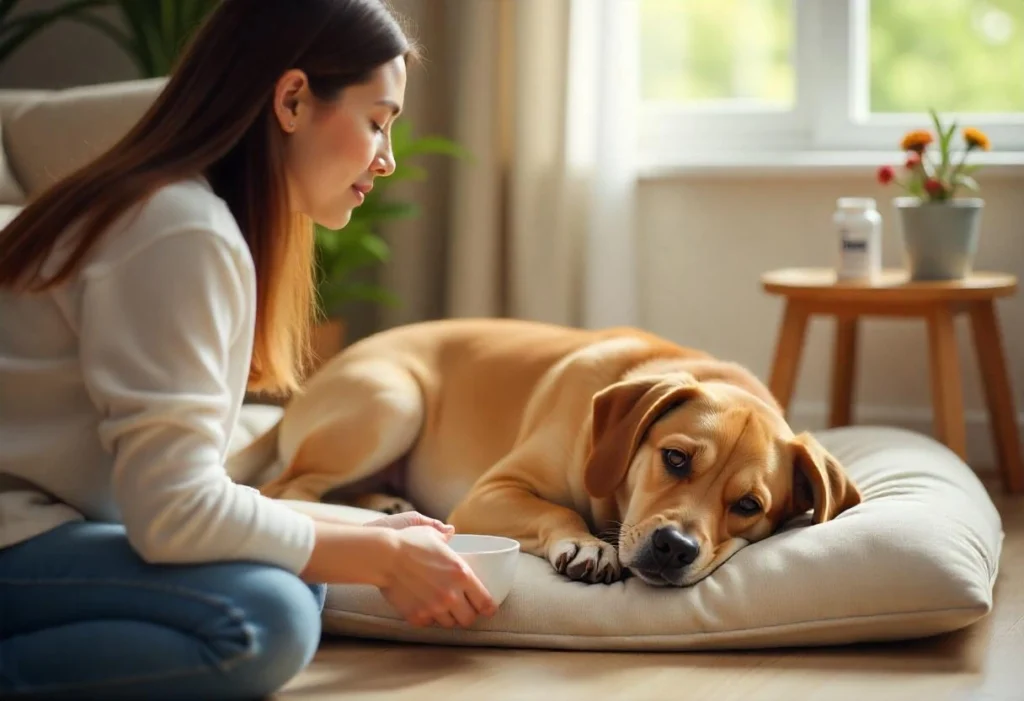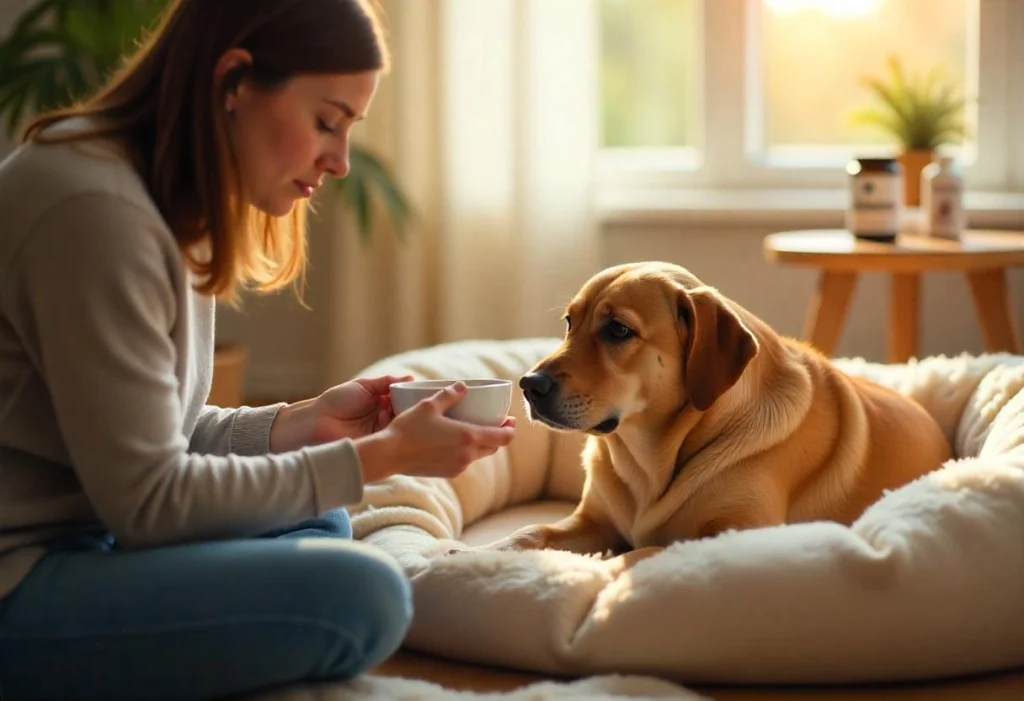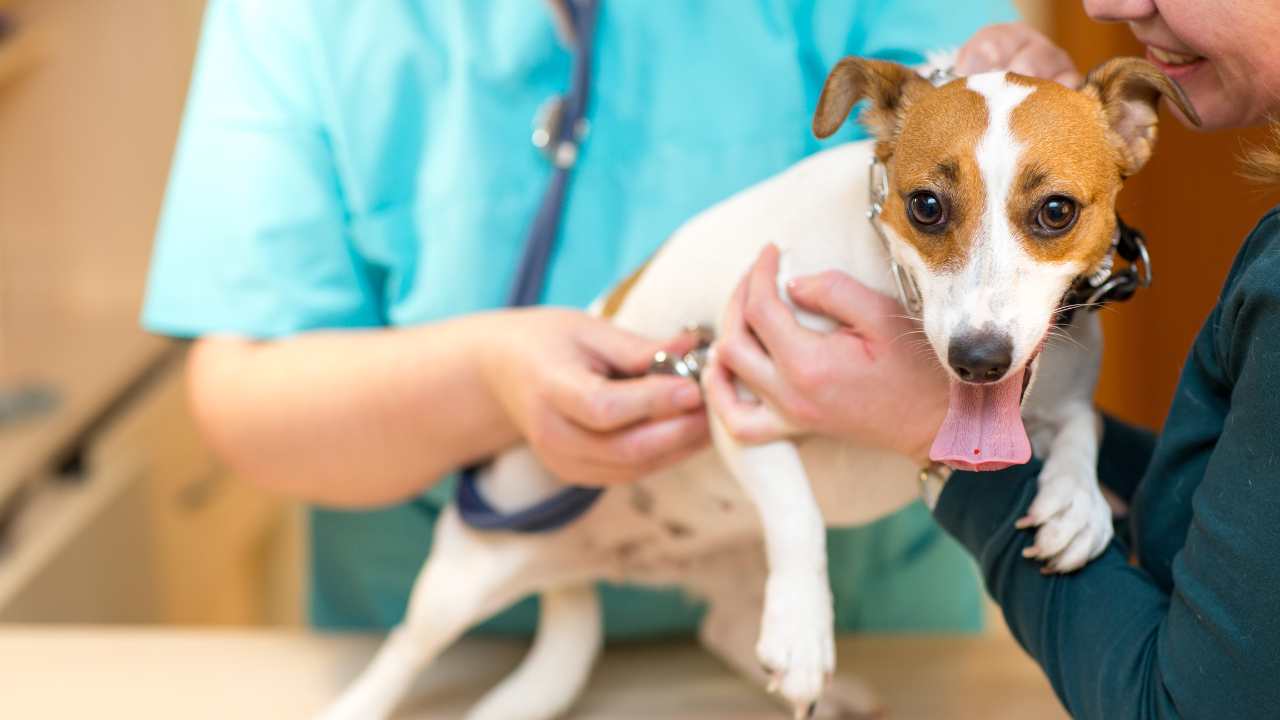
How to Treat Dog UTI at Home – Fast & Safe Remedies
If you’ve ever seen your dog struggle to pee or whine at potty breaks, then you know something’s wrong. I’ve been there. It’s heartbreaking to watch your best friend hurt and not know what’s wrong with him.
Urinary Tract Infections (UTIS) are even more common than most dog owners realize. It turns out about 14 % of dogs will get a UTI at some point in their lives. And if your pup is female, the chances are even higher. Their shorter urinary tracts make it easier for bacteria to cause trouble.
Left untreated, an uncomplicated UTI can turn serious. We’re talking kidney infections, bladder stones, or worse. That’s why catching it early—and knowing how to treat a dog UTI at home safely—is so important. It could save your pup a lot of pain and prevent an expensive vet visit.
In this guide, I’ll explain the signs to watch for and the home remedies I’ve used to ease my dog’s discomfort. I’ll also explain when to stop trying things at home and call your vet.
This isn’t just advice. It’s an experience. Let’s help your pup feel better—fast.
Signs and Symptoms of Dog UTI
Over the years, I’ve learned one thing: dogs won’t fake being okay. When they’re hurting, they show it—you must know how to identify it.
I still remember when my dog, Paro, started having accidents indoors. She had been house-trained for years. At first, I thought it was stress or old age. But then I noticed her squatting frequently with barely any pee coming out. That strong smell in her urine? It hit me—dog urine infection.
You must recognize the symptoms early if you’re looking for remedies for dogs with UTIs. Trust me, the faster you catch it, the easier it is to treat, especially if you want to know how to treat a dog UTI at home without going to the vet for every flare-up.

🐾 Common Signs of a Dog UTI
- Peeing small amounts very often
- Whining or straining during urination
- Licking the private area too much
- Pink or reddish tint in pee (sign of blood)
- Potty accidents—even if fully trained
- Strong, almost sour-smelling urine
- Seeming more tired or withdrawn
A dog urine infection can also manifest through subtle behavior changes. Some dogs become clingy, while others avoid touch. It’s not just the bladder acting up—it affects the dog’s mood, too.
I’ve used natural options like cranberry supplements or unsweetened cranberry juice mixed with water in mild cases. They don’t cure every UTI but support urinary health and can help flush out bacteria. I’ll explain more about that in the home remedies section.
But if you ever spot blood in the urine or see your dog in real pain, don’t wait. Call your vet. You can always use home remedies for dogs when it’s safe, but don’t gamble with severe symptoms.
Causes of Dog UTI
Let me tell you something I’ve learned the hard way—UTIs don’t just happen out of nowhere. There’s always a reason. And once you understand what causes a dog’s urine infection, you can start preventing it.
For my dog, Paro, it was poor hygiene. She had thick fur around her bottom, and I didn’t realize how much bacteria could hide there. For another, it was bladder stones. Every dog is different, but the pain they feel? It’s the same.
Here are the most common causes I’ve seen in my years of caring for dogs:
🐾 What Causes a Dog Urine Infection?
- Bacteria: This is the biggest one. Usually, it is from E. coli that sneaks in through the urethra.
- Poor hygiene: Dirty bedding, infrequent baths, or messy private areas can lead to infections.
- Weakened immune system: Older dogs or pups recovering from illness are more vulnerable.
- Bladder stones or crystals can irritate the bladder and open the door for infection.
- Holding urine too long: Some dogs wait all day while you’re at work. That’s not healthy.
- Chronic issues: Diabetes, kidney disease, or Cushing’s can increase UTI risk.
Even diet plays a role. I’ve seen improvement in dogs after adding fresh, moisture-rich food and urinary supplements. Some pet parents use cranberry as part of their routine, and while it’s not a cure, it supports the urinary tract.
But here’s the truth: if your dog’s UTI keeps returning, you must dig deeper. Sometimes it’s not just about bacteria—it’s a sign of something bigger.
🔔 Always rule out underlying conditions with your vet if symptoms persist. It’s better to be sure than sorry.

Can You Really Treat a Dog UTI at Home?
Yes, you can—but only if it’s mild, and you stay alert.
I’ve treated a few early UTIs at home over the years. One of my dogs, Max, started peeing more often and had a strong smell in his urine. He wasn’t in pain, but something felt off. I acted fast, and that made all the difference.
If you’re wondering how to treat dog UTI at home, start by observing. Is your dog still playful? Eating normally? Peeing without crying? If yes, you may be able to manage it at home—but only for a few days.
🐾 When Home Remedies Are Okay
If the symptoms are light and your dog isn’t in visible pain, you can:
- Offer plenty of fresh water to flush the bladder
- Try natural support like cranberry supplements (ask your vet first)
- Use clean bedding and keep their private area tidy
- Offer moisture-rich, high-quality food
- Monitor pee closely—check color and frequency
But let me be clear. Home remedies for dogs with UTIs are only supportive. They don’t replace proper medical care. If your dog still struggles to pee after 3–5 days, or if there’s blood in the urine, go to the vet.
Also, if your dog cries when peeing or looks weak, don’t wait. Pain is never normal.
📌 I always say this: “Just because you can treat it at home, doesn’t mean you should—unless you’re sure.”
Fast & Safe Home Remedies for Dog UTI
As a pet owner who’s dealt with UTIs in my dogs, I’ve learned a lot about how to manage things at home. Early intervention is key. If you spot symptoms early, you may be able to help your dog feel better in no time, with some safe, natural remedies. Let’s dive into the best home remedies for dog UTI.
🐾 Fresh Water Intake
One of the first things I do when I suspect a UTI is encourage my dogs to drink more water. Hydrate your dog to flush the bacteria out of the bladder. It’s so simple but can be incredibly effective.
Add fresh, cool water throughout the day. If your dog isn’t drinking enough, try adding a little low-sodium bone broth to make the water tastier. Trust me, it works wonders.
🐾 Cranberry Supplements
Cranberry is a go-to remedy for me. It prevents bacteria from sticking to the bladder walls, helping to flush out the infection. I use cranberry supplements designed specifically for dogs. They come in chewable tablets or powders, and they’re easy to add to food or water.
I’ve seen how cranberry can make a real difference. Just make sure you’re using a product meant for pets—human cranberry juice can have too much sugar.
Check out these pet-safe cranberry supplements.
🐾 Apple Cider Vinegar
Apple cider vinegar is a remedy I’ve turned to many times. It’s antibacterial and helps balance urine pH. I mix 1 tsp per 50 lbs of body weight in water or food, up to twice a day.
But a word of caution—don’t use it if your dog has kidney issues or a sensitive stomach. Always start small and see how your dog reacts.
🐾 D-Mannose Powder
D-Mannose is a natural sugar I swear by. It’s gentle but effective, especially for E. coli, the most common cause of UTIs. I add D-Mannose powder to food or water. It helps flush the bacteria out of the bladder, supporting your dog’s natural healing process.
This one’s safe and often recommended by vets. It’s one of the first things I reach for when symptoms are mild.
🐾 Probiotics
I’ve found that probiotics are a great addition to a dog’s diet when they’re dealing with UTIs. They help balance the gut, which boosts overall immune defense. A healthy gut makes it harder for bacteria to take over.
Choose probiotics formulated for dogs. I like using canine-specific brands to ensure they’re getting exactly what they need.
🐾 Marshmallow Root or Uva Ursi Tea (Advanced Natural Options)
For more advanced remedies, I’ve used marshmallow root and Uva Ursi tea. Both have natural anti-inflammatory properties that can help soothe the urinary tract. But I stress—consult a vet herbalist before you try these. The right dosage is key, and it’s important to make sure your dog tolerates these herbs.

Supportive Care Tips During a UTI
Dealing with a dog’s UTI can be tough, but supportive care can make all the difference. Here’s what has helped me when my dogs went through it.
🐾 Take Frequent Potty Breaks
You know when your dog has a UTI, they tend to be more demanding for every pee run? To answer your question I make sure my dog gets plenty of pee runs so that it feels better to pee more frequently and that the urine stays in their bladder for a longer period of time which only exacerbates the infection. I don’t force it though. just make sure they have time.
🐾 Keep the Genital Area Clean
I would say keeping your dog ‘s genital area clean is crucial for not aggravating the infection further. I use unscented baby wipes to gently clean it ( especially after any potty breaks ), to prevent buildup of bacteria that could make the infection worse. I would also trim any fur around that area to make sure it stays dry and clean.
🐾 Avoid Stress
Stress can make a dog weaken its immune system so I try to keep it low key. I keep play time light and try not to put myself in stressful situations. In a relaxed environment my dogs body can fight off the infection better. If my dog is more sensitive to stress I try to provide him with more cuddles and keep things low key.
🐾 Monitor Food and Water Intake
Hydration is always a concern for me, and I watch how much water my dog is drinking. If they are not drinking enough water, I encourage them with ice cubes, low-sodium broth, or a splash of cranberry juice. I also always aim for bland foods and easy-to-digest foods since UTIs can upset dogs’ stomachs. The least amount of food avoids digestive upset.
🐾 Use Washable Pee Pads for Accidents
Sometimes your dog may not be able to hold it as often when you have a UTI. I have used washable pee pads around my dogs area of frequent urination to make cleanup easier and less stressful for him when accidents occur. Also they help me keep track of how often my dog is peeing which will help in terms of how often you should ask the vet about symptoms.
When to See the Vet
As a dog owner who’s been through UTIs, I know there are times when home care isn’t enough. Here’s when it’s time to visit the vet:
🐾 No Improvement in 3 Days
If your dog’s symptoms haven’t improved after 3 days of treatment, it’s time for the vet. Keep your dog hydrated, but if nothing changes, don’t wait too long.
🐾 Blood in Urine
Blood in the urine is a clear sign that something serious is going on. It could mean a severe UTI or even urinary stones. This is when a vet visit is urgent.
🐾 Vomiting or Fever
If your dog starts vomiting or has a fever, the infection might be spreading. Vitamin C can help boost immunity, but if the symptoms persist, see a vet. Proper hygiene and hydration are essential, but don’t delay seeking professional help.
🐾 History of Recurring UTIs
If your dog’s had UTIs before, it’s smart to consult a vet early. Recurrent UTIs could indicate issues like diabetes or stones. Ask about a urinary tract pet supplement to manage future occurrences.
🐾 Suspected Stones or Diabetes
If you suspect urinary stones or see signs of diabetes, get to the vet fast. Regular hydration and good hygiene help, but only a vet can properly diagnose and treat these conditions.
❓FAQs – Clear, Concise, and Keyword-Rich
A: No. Never give antibiotics without a prescription. You could cause resistance or worsen the infection.
A: Not human juice—it’s too sugary. Use dog-specific cranberry supplements.
A: Mild cases may improve in 3–5 days with proper care.
A: Wet food, blueberries, carrots, bone broth, and urinary-support kibble may help.
A: No. UTIs are not contagious, but shared water bowls and hygiene still matter.
A: Increase water intake, keep your dog clean, and try cranberry or urinary tract pet supplements. Add Vitamin C if your vet approves.
A: Not usually. UTIs need care. Use home remedies for dogs, but see a vet if symptoms persist.
A: Frequent peeing, straining, bloody urine, and licking. These are common dog UTI symptoms to watch for.
Final Thoughts
Don’t hesitate to visit the vet if your dog’s condition worsens. Hydrate your dog, maintain proper hygiene, and trust your instincts. If you’re unsure, it’s always better to be safe than sorry.
For more guidance on dog UTIs, check out PetMD’s UTI Guide.



